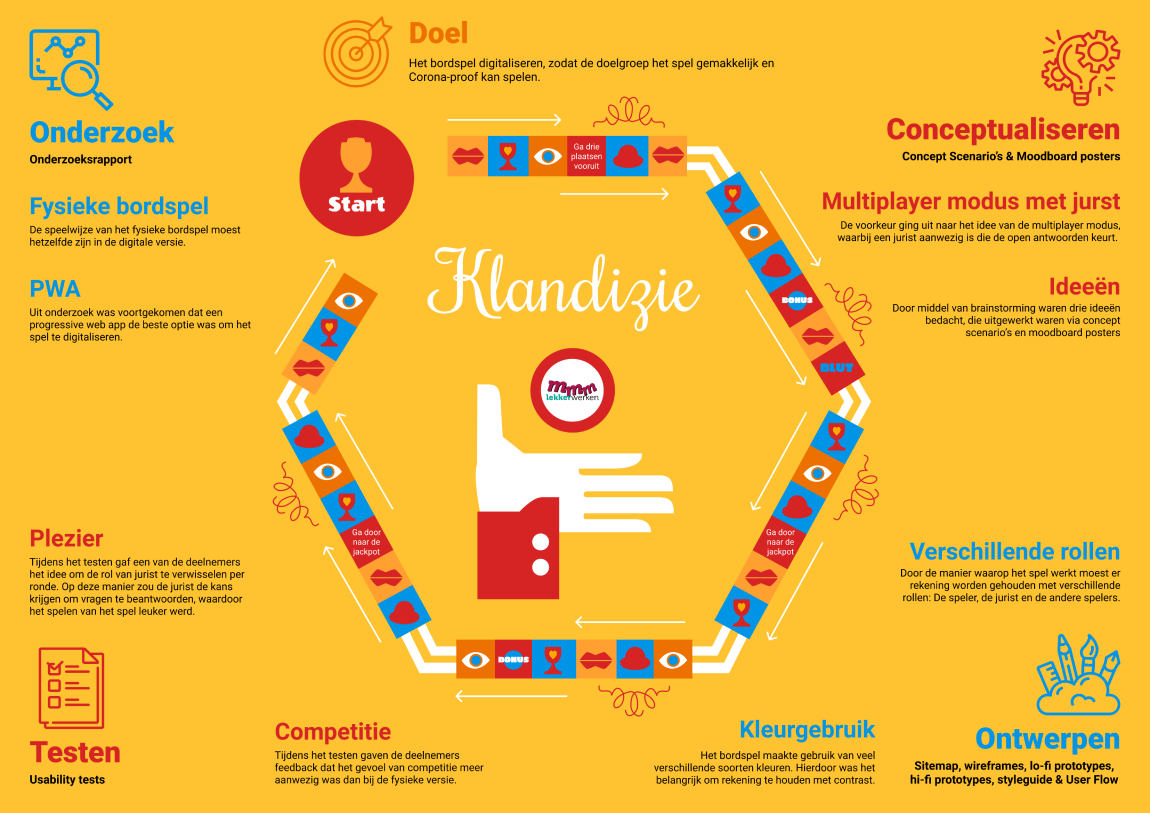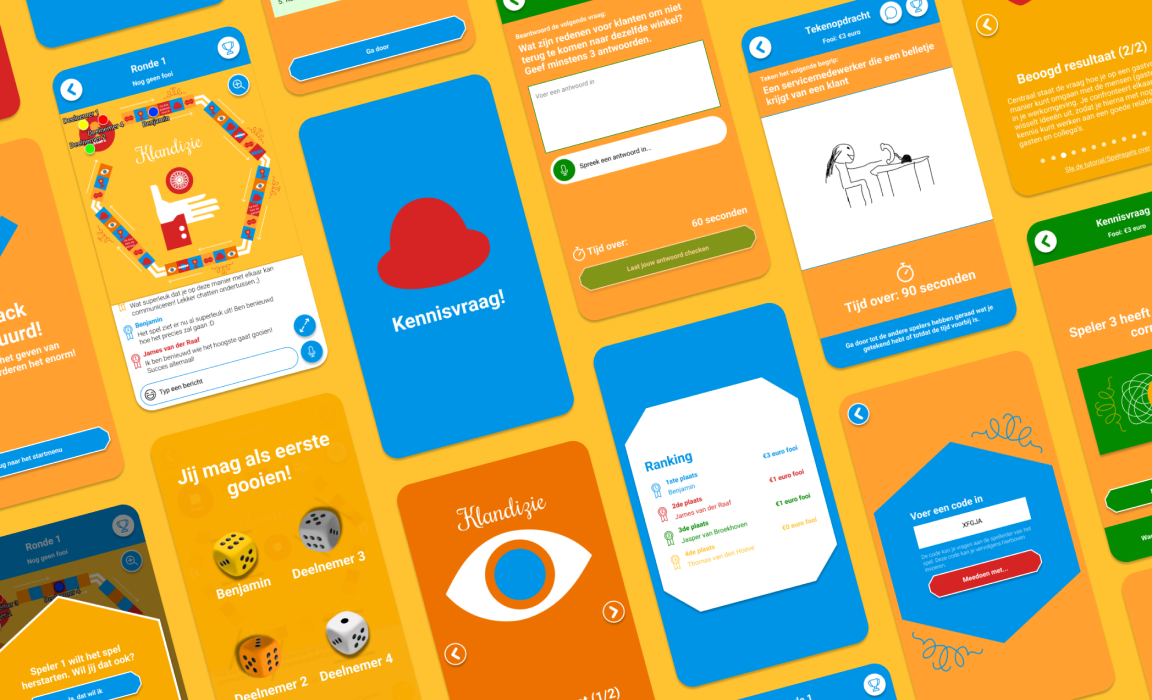About Klandizie For my graduation project I digitised the Klandizie board game. The physical version of the Klandizie board game couldn’t be played, due to Corona and the few physical copies. The game did not have a digital version, which could offer the same effectiveness and playful experience as the physical version. The goal was to digitise the board game, so that the target audience can easily and safely play the game during the Corona times. In doing so, i had to investigate which way of digitization gives the most effective product. The final product must stimulate a positive customer- and gaming experience. In addition, it was necessary to find the most efficient way to access and download the game.
Research I started with research in order to find the best possible way to digitise Klandizie. I used a product vision board to create a shared vision with my client, in order to stay focussed on this vision throughout this project. I used deskresearch to learn about the game itself and the rules, how and why the game was created and a I researched which factors I had to account for in order to make a game fun. I used target group research to get a clear image of the target group and I tested the physical game with them, in order to gather opinions. The target group and conversations with my client also created some persona’s and an empathy map, in order to take the target group in account throughout the project. I’ve also done a concurrent analysis, in order to see how other famous board games were digitised, in order to find the best way of digitising a board game. User Needs were found and formulated with the help of the field research, the online analytics, the competitive analysis and the online questionnaire. This was done by combining frequently occurring results on the same subject into one short shared story in the form of User Needs. User stories were then created in which the user needs are elaborated in a short scenario. Acceptance criteria have been drawn up using the user stories. The research showed that a mobile application would be the best way to digitise the board game. It also showed that having the same playstyle and experience is important.
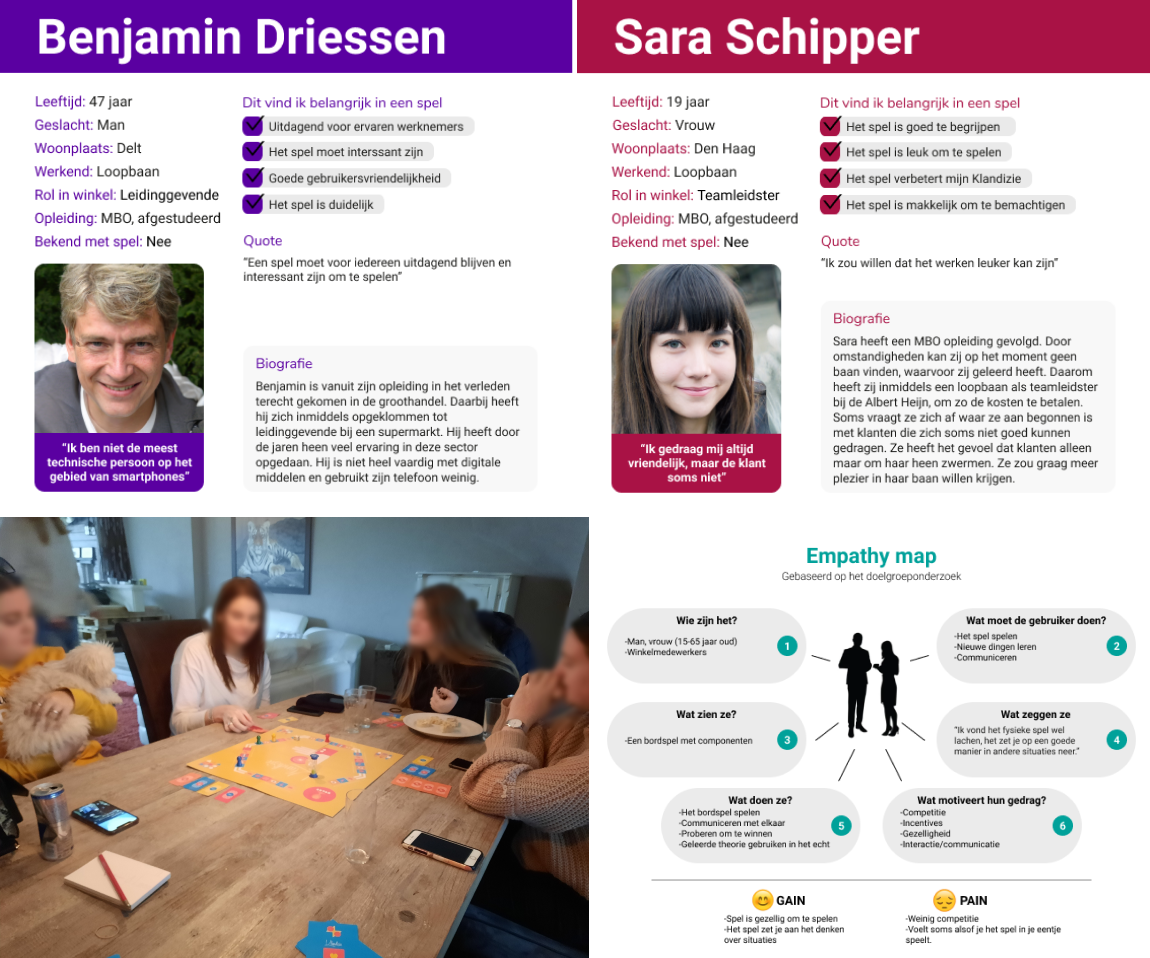
Creating concepts During the research, it was decided that an application would be the best solution to digitise the board game. This limited the possibilities for concepts, but I could still make different concepts for an app. I used brainstorming with the help of a datawall to create idea’s. To fill in the inspiration wall or data wall I used the User Needs from the research. I started with research in order to find the best possible way to digitize Klandizie. I used a product vision board to create a shared vision with my client, in order to stay focussed on this vision throughout this project. By grouping the user needs I discovered multiple idea’s about features that could be present in the app. I eventually had created two different main concepts that I presented to my client. This was done with the help of concept scenario’s, where I would illustrate how a certain function works. I also made a moodboard, to give the client a feeling of how the app could look like. At the end of the presentation, I asked the audience to fill in a feedback form, which helped me choose a concept and improve it. We had one more final extended presentation where we discussed some final thoughts and idea’s of this concept, in order to decide how certain features would work.
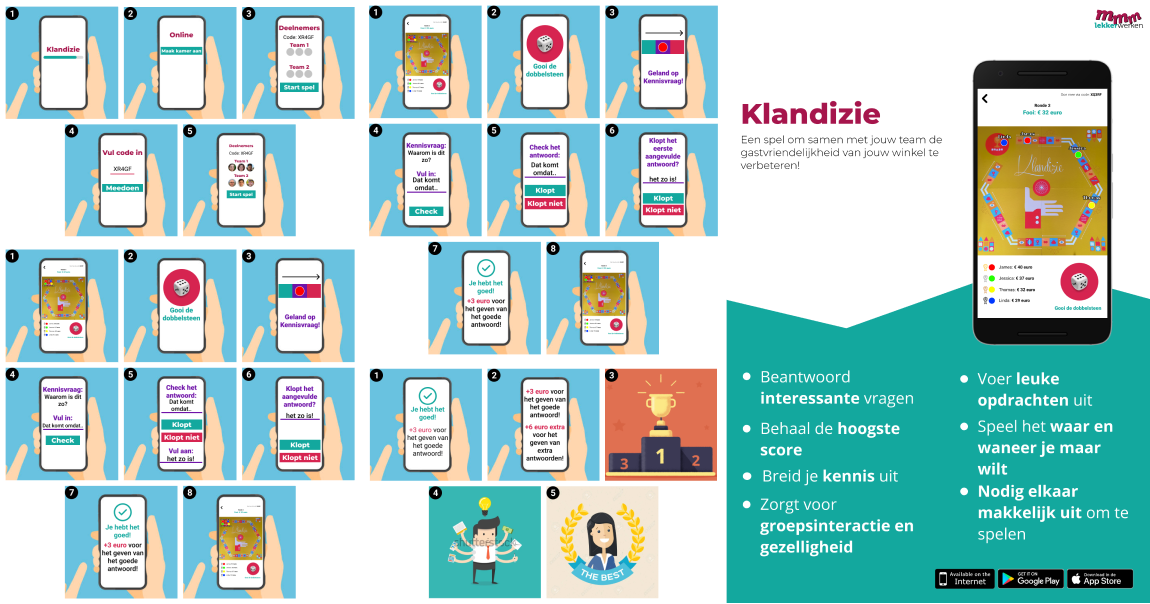
Designing the app During the concept phase, it was decided that the app would become an online multiplayer game, consisting of different roles. For example, you have a user to answer a question, a jurist to judge the answer and other people that can give an additional answer, based on the first answer. Because of all these roles, the app became complicated. A sitemap was created to get an overview of how this complicated app would work. I started making wireframes, based on the sitemap. I’ve tested these wireframes as a lo-fi prototype. With the help of the feedback I improved sitemap and wireframes. The updated wireframes made it possible to start working on a hi-fi prototype. I started this by making a styleguide, which I used for consistency throughout the designs and to give an impression of the atmosphere that the product would deliver. After that I turned the wireframes into a hi-fi design and prototype.
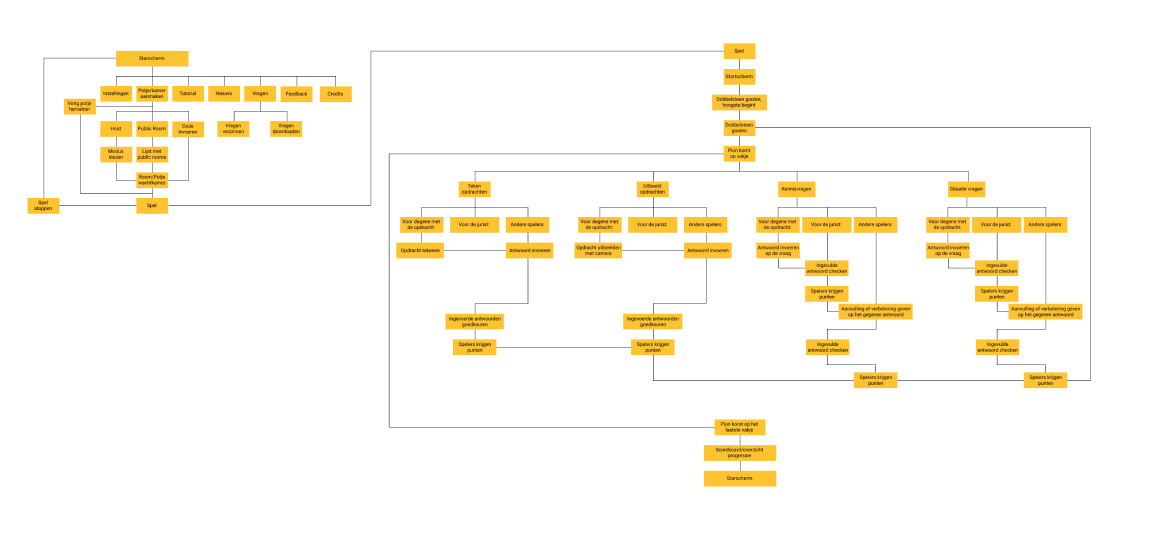
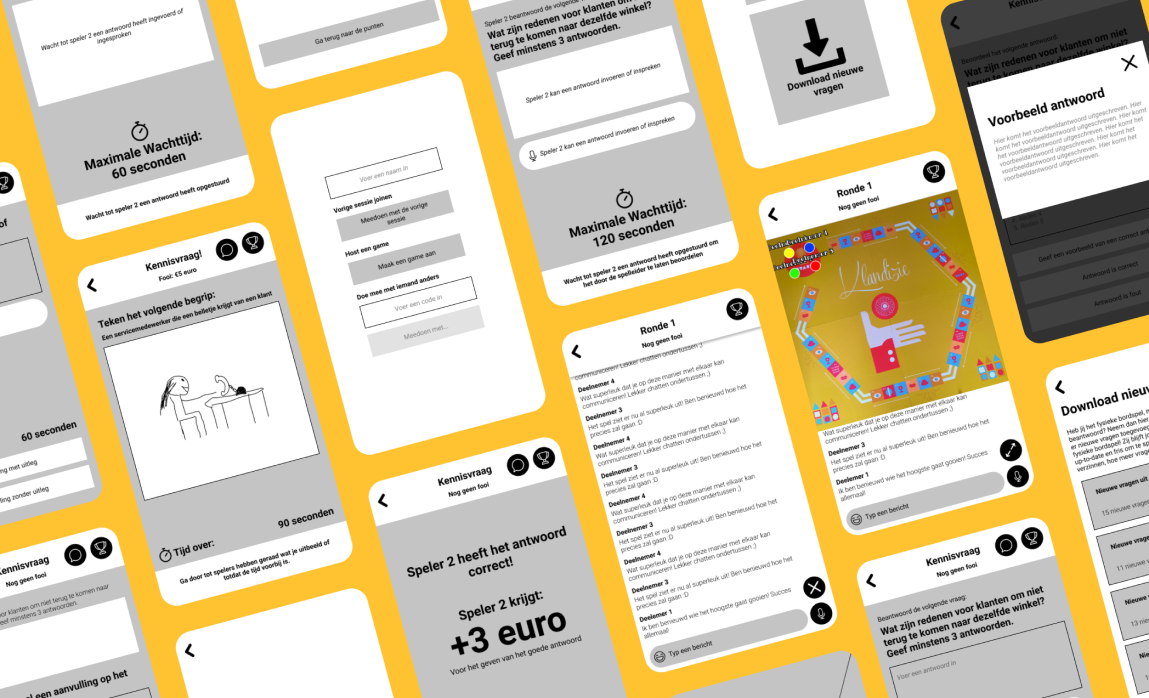
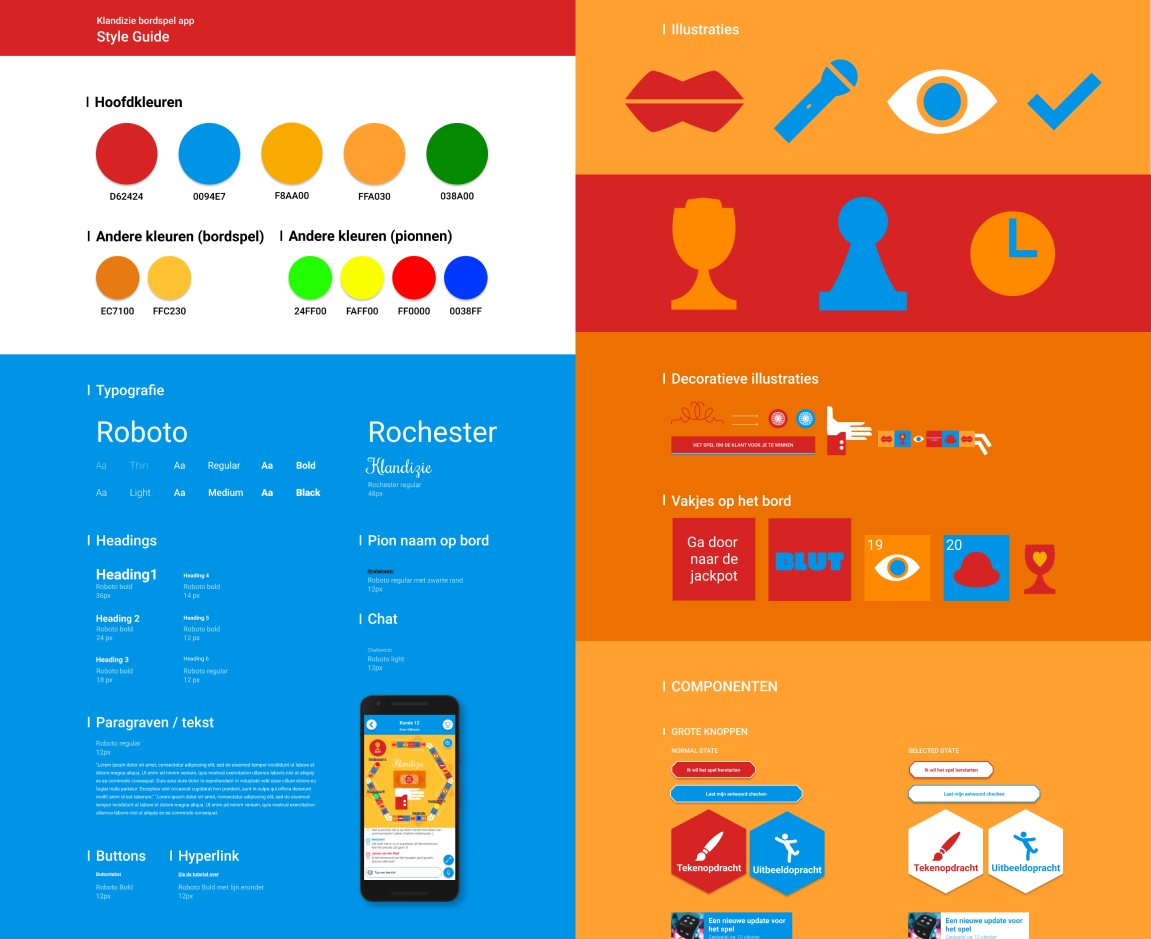
Testing the app prototype At the end I did multiple user tests with the target group. The participants got to play the prototype, while I asked them some questions. I’ve tested the game with a group and with individual people. I recorded the sessions so that I could rewatch or relisten to their feedback. With the help of their feedback I made final changes the design and prototype. I also made a hi-fi user flow of the entire app, to show developers how the app should work if it would become a real product.
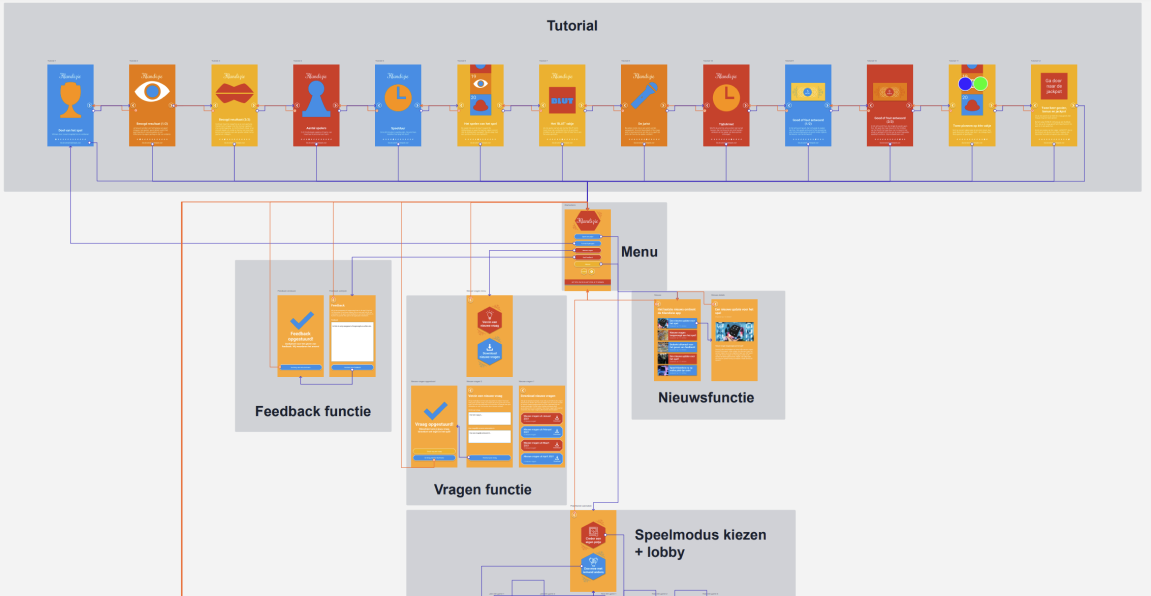
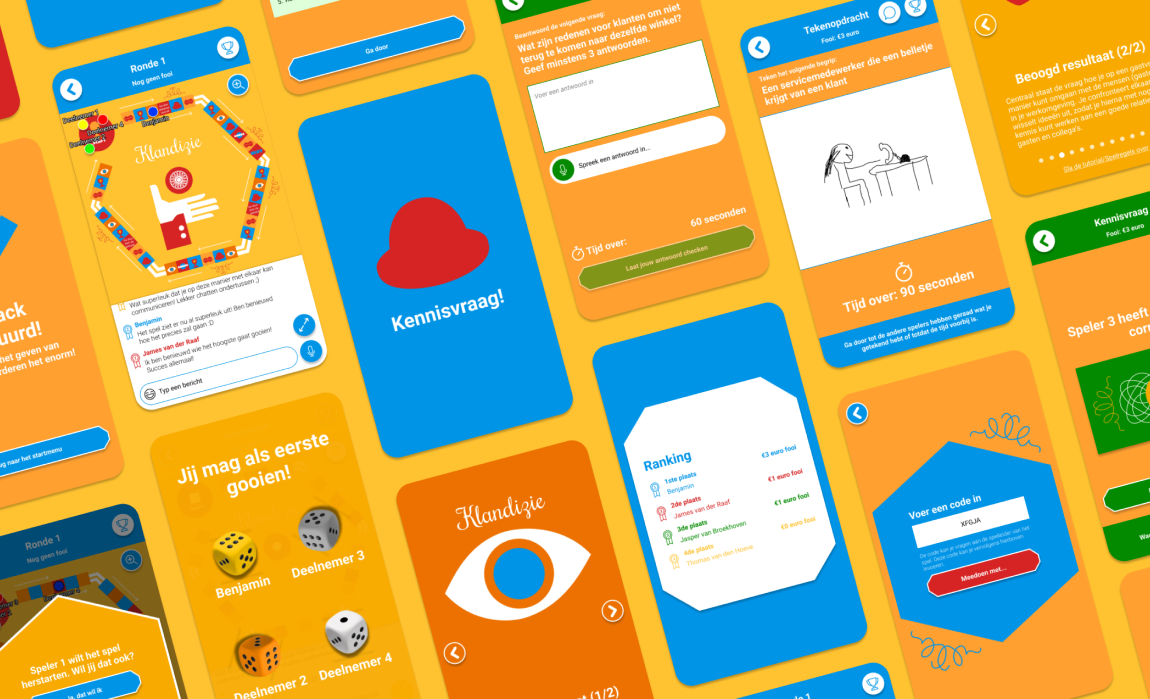
The Result The final result is a hi-fi prototype of the Klandizie board game, in the form of a mobile application. You can play the game, look up the tutorial & news about the game, add new questions to keep the gameplay fresh, download new questions so you can use them in the physical version of the game, give feedback to improve the app. The game itself also has a leaderboard, to add more competition and a chat function, in order to communicate well. I also made a visual summary, to show the whole process of the project in a visual way.
